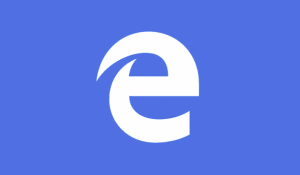 When Microsoft launched Windows 10 a couple of months ago, they also launched their brand new Edge web browser along with it.
When Microsoft launched Windows 10 a couple of months ago, they also launched their brand new Edge web browser along with it.
I believe Microsoft’s decision to create a brand new browser from scratch instead of simply updating Internet Explorer for the 1,000th time was a good one.
Over the years I.E. had earned a reputation for sluggish performance, buggy code and dangerous insecurity, and I don’t thing the company would have ever been successful at rehabilitating that poor reputation.
Microsoft invested a lot of time and money into developing Edge with the hopes that a faster, leaner and more secure browser could help rebuild the dominance they once held in the browser market. But apparently (so far) that effort has been pretty much for naught.
According to a just-released study from Quantcast, Edge has failed miserably at its attempt to become the browser of choice for Windows users. In fact, it has even failed to retain many of the users who had previously been using I.E.
Google’s Chrome browser is currently being used by roughly 70% of Windows 10 users while those preferring to use Edge make up just a small fraction of that number.
I believe part of Microsoft’s problem in winning converts to Edge is the extreme spartan nature of the new browser. Lean and secure is great (and certainly a nice change from I.E.), but Edge has zero personality and it’s a bit difficult to get used to.
If the folks at Microsoft can just spiff Edge up a bit and make it more expandable without sacrificing speed and security, I believe it will be able to successfully compete with Chrome and Firefox. But given their track record, that outcome just might not be in the cards.